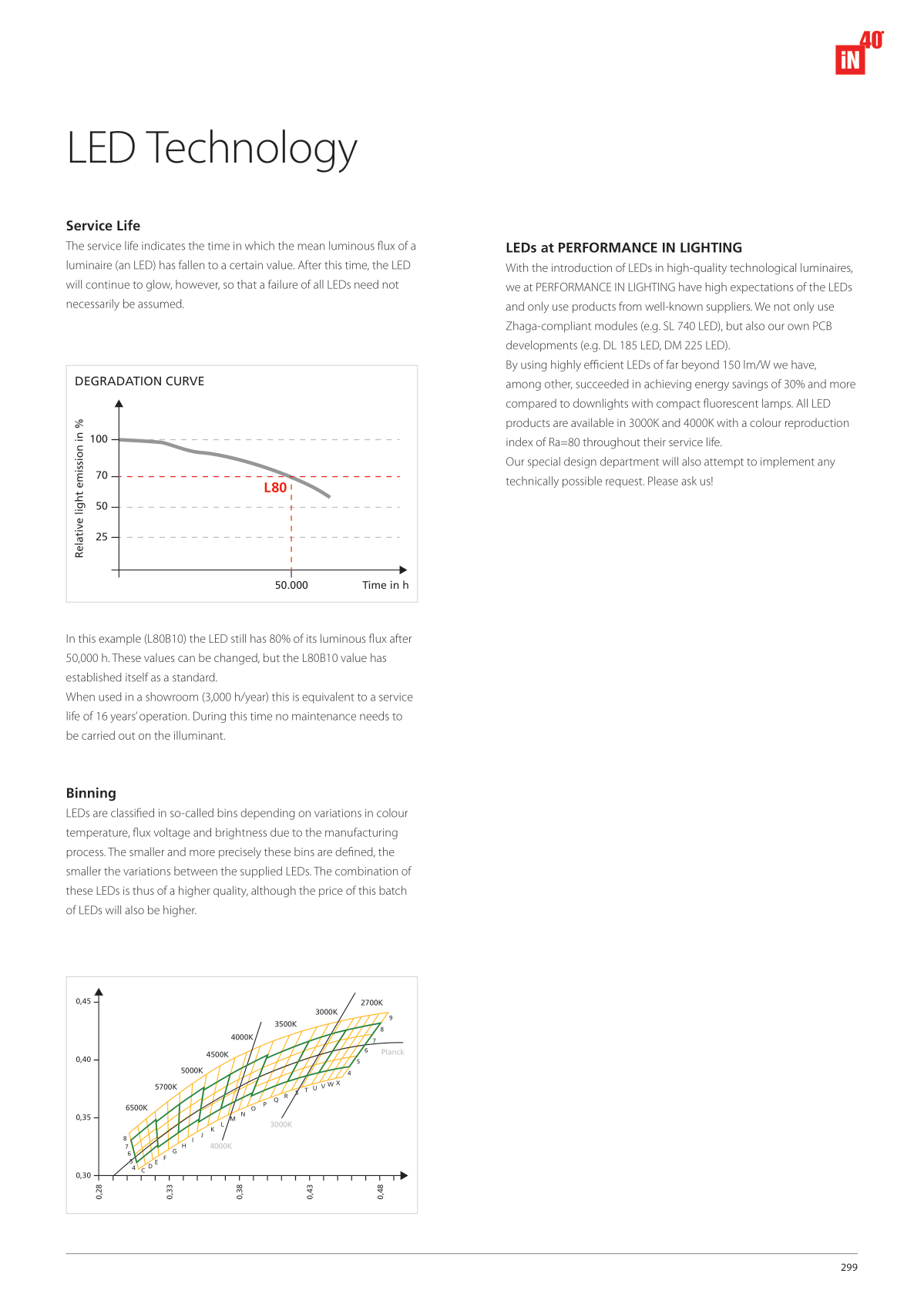299
0,30
0,35
0,40
0,45
50
25
100
70
50.000
0,28
0,33
0,38
0,43
0,48
6500K
5700K
5000K
4500K
4000K
3500K
3000K
2700K
8
7
6
5
4
C D E
F
G
H
I
J
K
L
M
N
O
P
Q
R
S
T U V W X
8
7
6
5
4
9
4000K
3000K
Planck
L80
Service Life
The service life indicates the time in which the mean luminous fux of a
luminaire (an LED) has fallen to a certain value. After this time, the LED
will continue to glow, however, so that a failure of all LEDs need not
necessarily be assumed.
LED Technology
In this example (L80B10) the LED still has 80% of its luminous fux after
50,000 h. These values can be changed, but the L80B10 value has
established itself as a standard.
When used in a showroom (3,000 h/year) this is equivalent to a service
life of 16 years’ operation. During this time no maintenance needs to
be carried out on the illuminant.
Binning
LEDs are classifed in so-called bins depending on variations in colour
temperature, fux voltage and brightness due to the manufacturing
process. The smaller and more precisely these bins are defned, the
smaller the variations between the supplied LEDs. The combination of
these LEDs is thus of a higher quality, although the price of this batch
of LEDs will also be higher.
Time in h
Relative light emission in %
DEGRADATION CURVE
LEDs at PERFORMANCE IN LIGHTING
With the introduction of LEDs in high-quality technological luminaires,
we at PERFORMANCE IN LIGHTING have high expectations of the LEDs
and only use products from well-known suppliers. We not only use
Zhaga-compliant modules (e.g. SL 740 LED), but also our own PCB
developments (e.g. DL 185 LED, DM 225 LED).
By using highly efcient LEDs of far beyond 150 lm/W we have,
among other, succeeded in achieving energy savings of 30% and more
compared to downlights with compact fuorescent lamps. All LED
products are available in 3000K and 4000K with a colour reproduction
index of Ra=80 throughout their service life.
Our special design department will also attempt to implement any
technically possible request. Please ask us!



